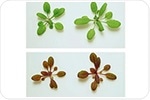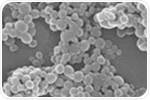| AgriTech - Reducing Risk in Agrochemical Development |
|
|
|
|
| |
|
| |
The latest agritech news from AZoLifeSciences |
|
|
|
 | | |
 The Science Behind the Beer and Brewing Industry The Science Behind the Beer and Brewing Industry
At Pittcon, you can learn from industry experts and thought leaders via the extensive symposia, which covers several education tracks, including environment and energy.
Learn more about The Science Behind the Beer and Brewing Industry here.
| |
|
|
|
|
|
 | | |  Researchers have introduced an innovative approach for modeling mixed wind farms using artificial neural networks (ANNs) to capture complex relationships between variables. This method effectively represents the external characteristics of mixed wind farms in various wind conditions and voltage dip scenarios. Researchers have introduced an innovative approach for modeling mixed wind farms using artificial neural networks (ANNs) to capture complex relationships between variables. This method effectively represents the external characteristics of mixed wind farms in various wind conditions and voltage dip scenarios. | | | | |  Researchers have developed the SmartGlove framework, which connects animal electronic identification (EID) with augmented reality smart glasses (ARSGs) for hands-free visualization of specific animal data in the field. This innovative approach offers potential benefits for precision livestock farming by improving data consultation and interpretation. Researchers have developed the SmartGlove framework, which connects animal electronic identification (EID) with augmented reality smart glasses (ARSGs) for hands-free visualization of specific animal data in the field. This innovative approach offers potential benefits for precision livestock farming by improving data consultation and interpretation. | | | | |  Professor Toshihiko Eki, from the Department of Applied Chemistry and Life Science at Toyohashi University of Technology (also holding a concurrent position at the Research Center for Agrotechnology and Biotechnology), collaborated with a research team to employ DNA metabarcoding. Professor Toshihiko Eki, from the Department of Applied Chemistry and Life Science at Toyohashi University of Technology (also holding a concurrent position at the Research Center for Agrotechnology and Biotechnology), collaborated with a research team to employ DNA metabarcoding. | | | | |  Scientists have uncovered a protein that plays a crucial role in sealing plant roots, thereby controlling the absorption of nutrients and water from the soil. This discovery has the potential to aid in the development of resilient crops that require reduced water and chemical fertilizers. Scientists have uncovered a protein that plays a crucial role in sealing plant roots, thereby controlling the absorption of nutrients and water from the soil. This discovery has the potential to aid in the development of resilient crops that require reduced water and chemical fertilizers. | | | | |  Imagine if houseplants could alert one to unsafe water conditions. Scientists are making strides toward this innovative idea by successfully modifying a plant to change its color to beet red when it detects the presence of a prohibited and harmful pesticide. Imagine if houseplants could alert one to unsafe water conditions. Scientists are making strides toward this innovative idea by successfully modifying a plant to change its color to beet red when it detects the presence of a prohibited and harmful pesticide. | | | | |  Nanozymes are synthetic materials that mimic the properties of natural enzymes for applications in biomedicine and chemical engineering. They are generally considered too toxic and expensive for use in agriculture and food science. Nanozymes are synthetic materials that mimic the properties of natural enzymes for applications in biomedicine and chemical engineering. They are generally considered too toxic and expensive for use in agriculture and food science. | |
|
|
|
 | | | How would you rate today's newsletter?
| |
|
|
|
|
|